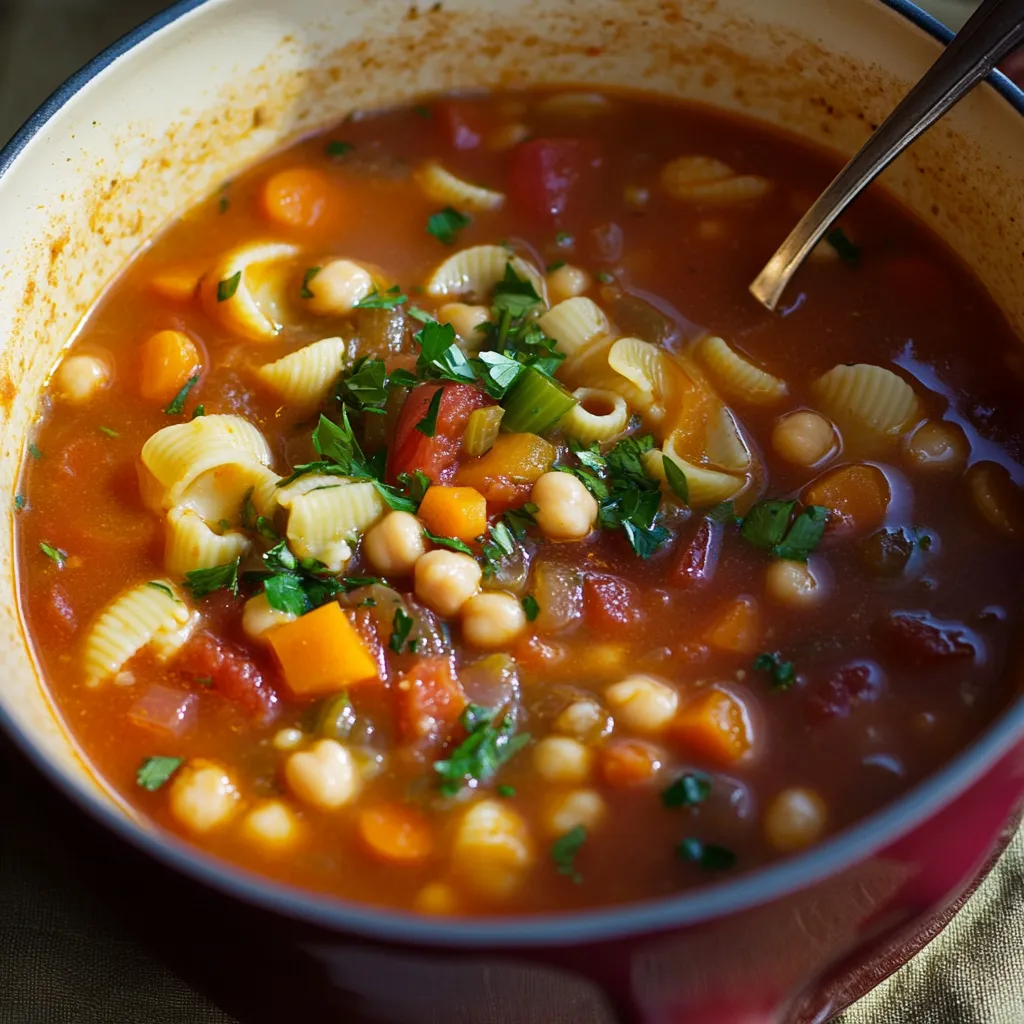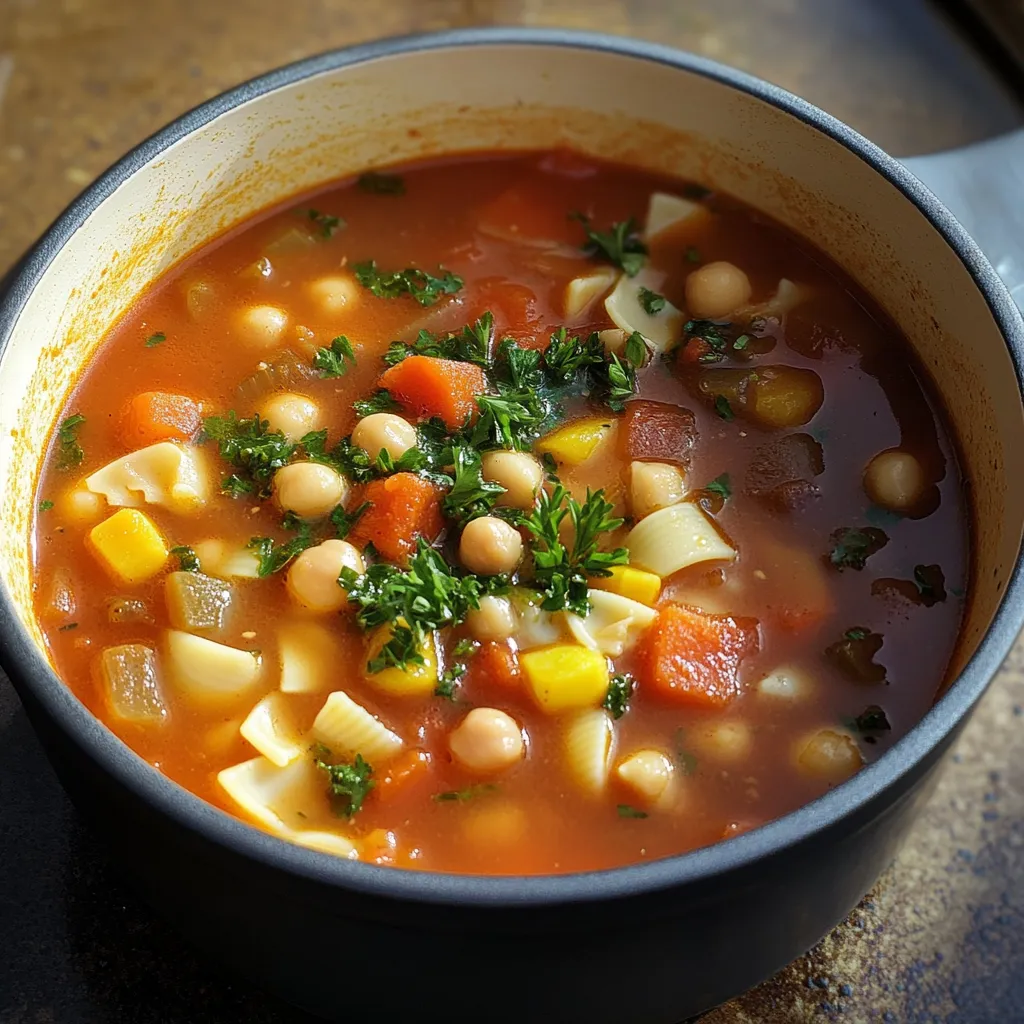 Pin it
Pin it
The ideal minestrone soup combines seasonal veggies that work together to create balanced flavors and textures. This version takes inspiration from Olive Garden but lets you switch things up based on what's fresh in your kitchen right now.
After trying many versions, I found that adding things in the right order and giving each ingredient time to share its flavor with the broth makes all the difference.
Key Components
- Fresh Vegetables: They build the main flavors
- Good Vegetable Broth: It's what ties everything together
- Chickpeas: They give you protein and a nice bite
- Tiny Pasta: Pick ones that don't cook unevenly
- Chopped Tomatoes: They bring depth to the taste
- Raw Garlic: You can't skip this for real flavor
Step-by-Step Guide
- Getting Veggies Ready (10-12 minutes):
- Cut onions, carrots and celery the same size. Chop potatoes into tiny cubes. Finely chop garlic. Cut other veggies similarly. Get everything ready before you turn on the stove.
- Starting Your Soup (8-10 minutes):
- Warm up a big pot on medium. Throw in garlic and onion first. Add some water instead of oil if you want. Cook until onions go clear. Drop in carrots, celery, and potatoes. Sprinkle with oregano and pepper. Let them soften a bit.
- Making It Come Together (5-7 minutes):
- Pour in your veggie broth. Add tomatoes with their juice. Toss in chickpeas. Let it bubble up gently. Add pasta. Stir so nothing sticks. Turn down the heat to a gentle bubble.
- Letting It Cook (12-15 minutes):
- Keep it bubbling softly. Stir now and then. Check if pasta feels done. Make sure veggies are tender. Taste and add salt or spices. Put in more broth if it's too thick.
 Pin it
Pin it
My big aha moment with this soup happened when I figured out exactly when to throw in the pasta so it stays firm but still soaks up all those amazing flavors.
Smart Cooking Advice
- Keep your veggie pieces similar sized so they finish together
- Throw in old Parmesan rinds to make the broth tastier
- Pick pasta shapes that match how big your veggies are
 Pin it
Pin it
Fixing Common Problems
- If Too Thick: Slowly pour in warm broth
- If Pasta Is Soggy: Next time add it closer to the end
- If Veggies Cook Differently: Try cutting them more evenly
Prep Ahead Ideas
- Chop veggies early and keep them apart
- Boil pasta on its own if making soup beforehand
- Fix the main soup without adding pasta
Keeping Leftovers
- Put in containers that seal well
- Stays good in fridge about 5 days
- Freeze it but leave out the pasta
Changes By Season
- Spring: Throw in fresh peas and asparagus
- Summer: Mix in zucchini and garden tomatoes
- Fall: Drop in some butternut squash or pumpkin
This Minestrone Soup shows what makes Italian cooking so great - taking fresh, basic ingredients and turning them into something that fills you up and makes you happy. It works great for family dinners or making batches for the whole week, showing how good food often comes from what's growing right now.
 Pin it
Pin it
Frequently Asked Questions
- → Why skip oil and use water for sauteing?
- It makes the dish light and fully plant-based while still softening the veggies right.
- → Can I pick a different bean type?
- Of course! Swap in any beans you like in place of the chickpeas.
- → What kind of pasta is ideal?
- Any small pasta works great, though the recipe suggests whole wheat shells.
- → What’s the reason for simmering uncovered?
- This reduces the liquid just a little and ensures the pasta cooks perfectly.
- → Is freezing this soup okay?
- Totally, but it’s better to add freshly cooked pasta later to avoid it going mushy.
